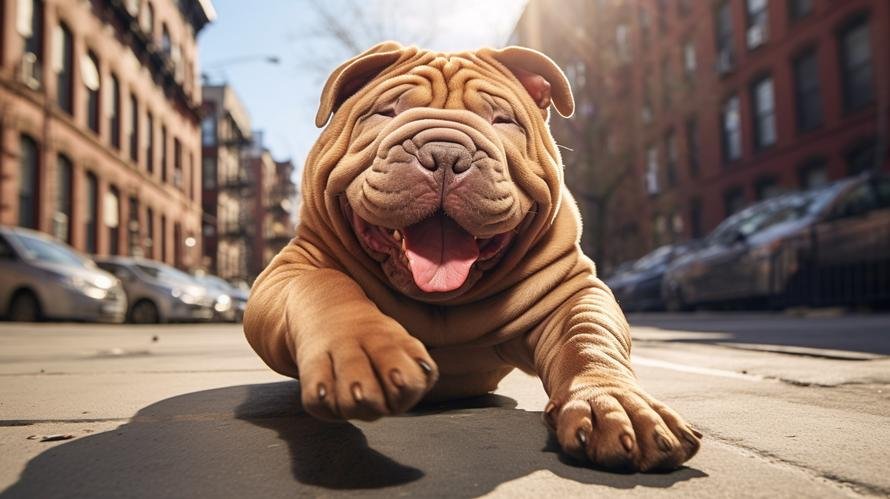Imagine a proud, dignified dog with a magnetic aura of calm surrounding them. A dog whose expressions seem to reflect wisdom well beyond their years—almost as if they hold an age-old secret. You might have just envisioned the Shar-Pei. But is this characteristically wrinkly-faced breed as calm and serene as it appears?
Originating from China, the Shar-Pei breed boasts a rich history that dates back several centuries. There you’ll find ancient statues and artifacts that bear an uncanny resemblance to this breed, hinting at its age-old existence. As a dog bred for hunting and herding livestock, the Shar-Pei has been a loyal companion to humans for generations. The breed’s name loosely translates to “sand skin,” referring to its unique, rough fur—a standout feature along with its button-like ears and deeply folded skin.
The Shar-Pei’s calm demeanor and controlled energy levels make it an incredible family companion. But remember, each dog is an individual with its unique personality and temperament. While the breed tends to be naturally subdued, the behavior of an individual Shar-Pei can vary based on their genetics, training, environment, and socialization experiences.
Shar-Peis are immensely intelligent, independent, and intensely loyal to their families, a trait that further contributes to their calmness. These dogs often form strong bonds with one person but can extend their loyalty to the entire family if raised in a shared environment. They are typically reserved around strangers, so socialization during their early development years is pivotal in preventing this reserved nature from morphing into aggression.
While a Shar-Pei might not be an Olympic-level sprinter, it still needs regular, moderate exercise to maintain its physical and emotional health. A couple of short walks or an energetic romp around a safe, enclosed open space each day can keep your Shar-Pei happy and serene. Shar-Peis are not hyperactive dogs, but like all dogs, they have the potential to develop destructive behaviors if their energy is not channelled properly.
Despite their independent streak, Shar-Peis thrive on love and respect from their human pack members. A training approach that incorporates kindness and positive reinforcement—such as rewarding good behavior with treats or praise—works best. Coercive or harsh training methods might push them towards resistance or aggression, ultimately affecting their overall calmness.
When it comes to the calmness of a Shar-Pei, their environment plays a significant role too. A calm, quiet household will contribute towards nurturing a calm and relaxed dog. Meanwhile, a chaotic or unstable home environment might stress them out, leading to anxiety and fear-related behaviors.
The Shar-Pei can sometimes suffer from a condition known as Shar-Pei Fever, making them lethargic and unresponsive—often mistaken as signs of being a calm dog. It’s particularly important for any prospective Shar-Pei owner to be well-aware of this breed-specific syndrome and consult with a veterinarian to ensure proper health maintenance.
Now, let’s talk about grooming. It might seem like an unusual subject when discussing a dog’s temperament, but it contributes significantly in this case. The deeply folded skin of a Shar-Pei needs to be cleaned regularly to prevent bacterial infections. A clean, healthy Shar-Pei is likely to be a happier, calmer dog.
Overall, the Shar-Pei is, indeed, a calm dog breed. But, as with humans, each dog’s temperament can be influenced by a range of factors including genetics, upbringing, and environment. Whether a Shar-Pei is right for your household depends largely on your lifestyle, home environment and your ability to meet their unique needs – intellectual stimulation, exercise, hygiene and health care.
A well-adjusted, well-socialized Shar-Pei can surely be a calm, affectionate and deeply loyal addition to your family. So if you’re considering adding a new canine member to your pack, this tranquil, wise and historical breed might be “the one” for you.



